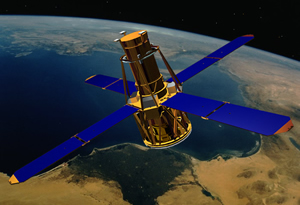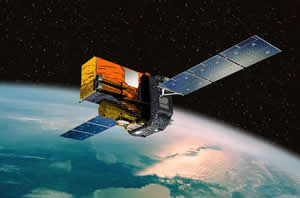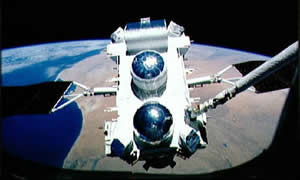Research
Here is a sampling of the research projects that I have worked on during my career. This is intended to provide a flavor of the kind of research that has kept me occupied over the years. Not included here, for example, are several projects related to the new detector technologies and the development of various neutron detector designs. For more details, check out my publications page.
GRAPEGamma-RAy Polarimeter ExperimentFor almost 15 years, we have been working on the development of detector designs for measuring the linear polarization of 50-300 keV photons. Computer simulations followed by laboratory prototypes have been used to improve successive designs. This work has culminated in the GRAPE baloon payload, which is scheduled for its first full-scale high-altitude balloon flight in the fall of 2011. With a total payload weight approaching 2000 pounds, we hope to have a flight duration of about 40 hours. Although the original focus of this effort was to measure the directionality of electron beams in solar flares, we are also interested in studying polarization of gamma-ray bursts. The first balloon flight will concentrate on observations of the Crab pulsar and the black hole source Cygnus X-1. The next step will be to fly GRAPE on a long duration payload (with flight duration of 3-4 weeks) to study gamma-ray bursts and solar flares. Our ultimate goal will be to fly some version of GRAPE on a satellite mission.
|
|
FermiFermi Gamma Ray Space TelescopeLaunched in 2008, the Fermi Gamma-Ray Space Telescope carries an instrument to study high energy gamma-rays along with an instrument for studying gamma-ray bursts. My guest-investigator research using Fermi data includes a study to determine whether the Fermi Gamma-Ray Burst Monitor (GBM) is sensitive to the polarization of gamma-rays from gamma-ray bursts. In addition, I am looking at atmospheric neutron data from the COMPTEL experiment, as an input to models of the background in the Fermi instruments.
|
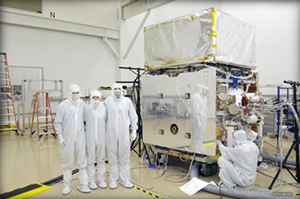 |
RHESSIRamaty High Energy Solar Spectroscopic ImagerLaunched in 2002, the RHESSI mission was designed to study X-ray and gamma-ray emissions from the Sun. As a guest-investigator, I have been working with RHESSI data in an attempt to measure hard X-ray polarization from solar flares (in the energy band from 20-100 keV). Measurements of solar flare polarization would provide insights into the geometry of the electron acceleration process. Although not optimized for polarization measurements, RHESSI should have suifficient sensitivity for measuring polarization levels of a few percent in the large (X-class) flares. This would be sensitive enough to constrain models of hard X-ray polarization. Unfortunately, the analysis is a difficult one and has yet to yield any definitive results.
|
|
INTEGRALINTErnational Gamma-Ray LaboratoryLaunched in 2022, this gamma-ray mission is led by the European Space Agency (ESA), although with significant contributions from NASA. It is designed to study hard X-rays and low energy gamma-rays from space using coded aperture imaging technologies (like that used in my thesis work). Still in operation, it is expected to remain operational at least until the end of 2012. My guest-investigator work has focused on follow up observations of measurements that I had made with COMPTEl. For the last few years I have served as a member of the NASA INTEGRAL Users Committee and, more recently, the ESA INTEGRAL Users Committee.
|
|
COMPTELCompton Imaging Telescope (on CGRO)One of four experiments on the Compton Gamma-Ray Observatory (CGRO), COMPTEL was a Compton telescope that imaged 0.75-30 MeV photons and 20-200 MeV neutrons. UNH was one of four institutions (and the only US institution) involved in the development and fabrication of COMPTEL. Launched in 1991 by the Space Shuttle, it remained operational until the termination of the mission in June, 2000. I joined the COMPTEL teamin 1987 just in time to participate in pre-flight calibration activities. At UNH, I coordinated the activities of the local COMPTEL Data Reduction Group (DRG) and the local software management of the COMPTEL analysis software (the COMPTEL Processing and Analysis Software package, or COMPASS). I have been involved in several scientific studies using COMPTEL data, including studies of galactic compact objects, solar flares, gamma-ray bursts, and atmospheric radiations.
|
|
DGTDirectional Gamma-ray TelescopeDGT was the high-altitude balloon experiment that I worked on as a graduate student. After two failed balloon flights (in 1982 and 1983), we had a very successful balloon flight in 1984. DGT represented the first time that a technique called coded aperture imaging was applied to gamma-rays from space. Coded aperture imaging is now a standard technique in high energy astronomy. That first balloon flight succeeded in imaging gamma-rays from both the Crab pulsar and the black hole binary system Cygnus X-1.
|
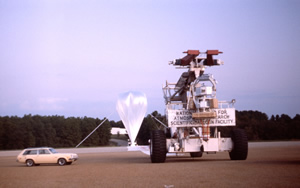 |


